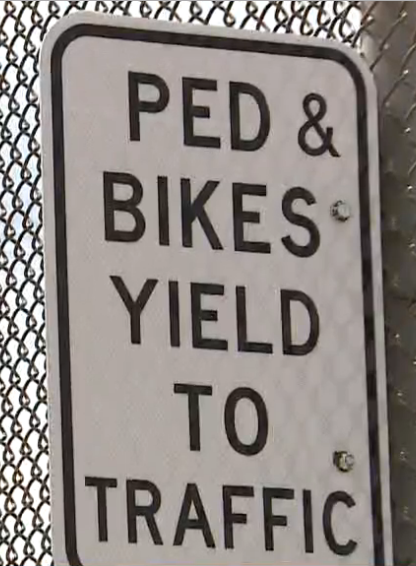Public Works Should Fix Deadly Intersections, Not Tell People to Avoid Them
Doctors said Jonathan Beltran was lucky. After all, he could have died when a driver hit him while he crossed West Colfax on his bicycle, he told 9News.
Beltran suffered serious injuries that required surgery. He also got slapped with a ticket from the Denver PD because, on this street, the law compels bicyclists and pedestrians to cower before cars. A sign near the intersection of West Colfax and the Auraria Parkway ramp tells them to yield to motor vehicles, even at the crosswalk. On that day, graffiti obscured the sign, and Beltran had the gall to assume he had the right of way at the crosswalk, where the driver struck and nearly killed him.
Beltran hired a lawyer and beat the ticket. A small victory, but Beltran isn’t stopping there. He also wants Denver Public Works to fix the dangerous intersection.
The agency disagrees, Public Works spokesperson Nancy Kuhn told 9News. Beltran shouldn’t have even been there, she said, because it’s not an official bike route, just a sidewalk — even though the sign indicates otherwise.
Kuhn said people on bikes should take a different, more circuitous route. She also said Public Works will look into changing the signage so people on bikes don’t mistakenly use a route not meant for them.
But Beltran didn’t just stumble across that route. He was taking the most direct way to his destination. A route, by the way, that Go Denver, the city’s own transportation app, tells you to use.
As Copenhagen “bicycle urbanism” expert Michael Colville-Anderson told a room full of Denverites earlier this year, it’s arrogant for engineers to think they can control the movement of people walking and biking, who usually want to follow the shortest path. Rather than changing a sign and assuming that bicyclists will stop using a street that they will, in fact, continue to use, why not listen to them and make the intersection safer? That is what a Vision Zero city should be doing.
Public Works basically acknowledged as much in its recently-published guide for pedestrian crossings. Instead of limiting the placement of pedestrian crossings so car traffic can move faster, forcing people on foot to take longer routes, the manual says street engineers should identify dangerous intersections and make them safe for walking.
The department needs to put the same principle to work at this intersection — make it safer, don’t do nothing and pray that no one gets hurt or killed.



